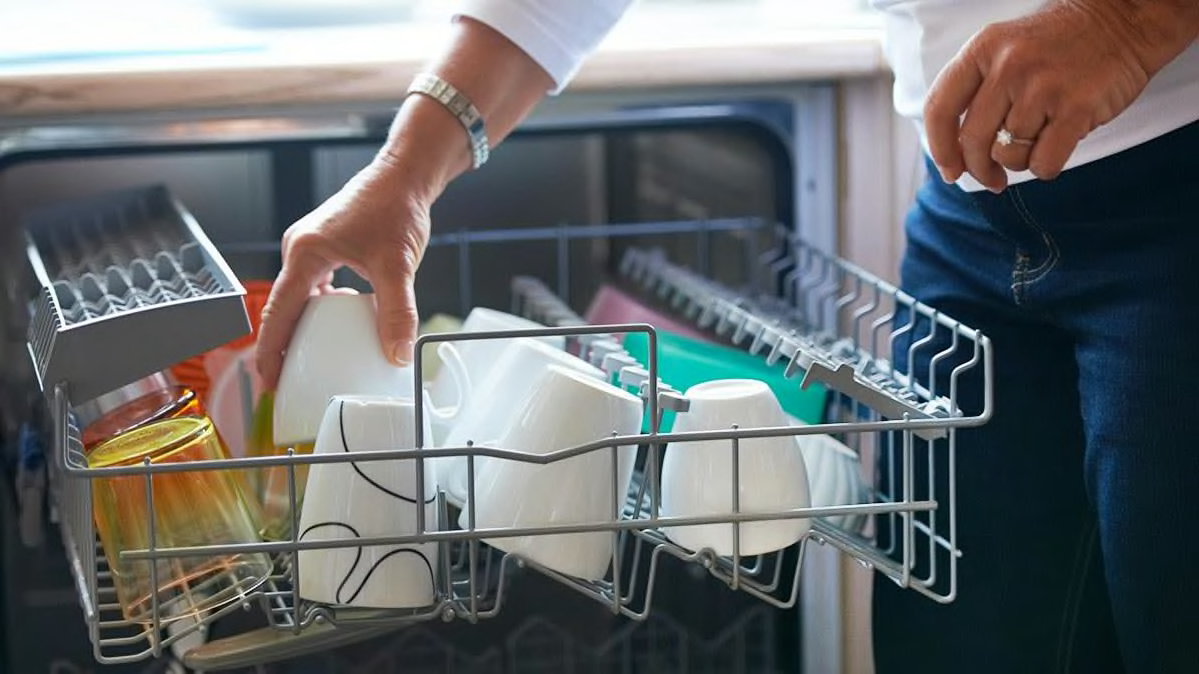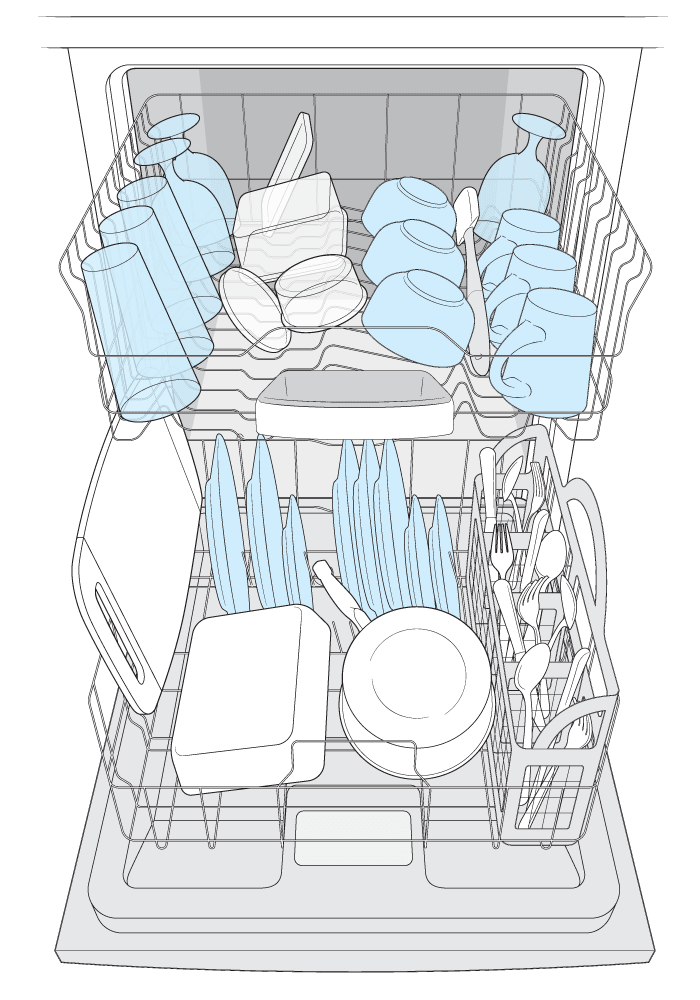
Consumer Reports has no financial relationship with advertisers on this site.
Dishwashers are one of the most hardworking home appliances. So here at Consumer Reports, we really put them through the wringer in our tests. We load each dishwasher with 10 place settings of white ceramic dishes with baked-on food, then run it on the normal cycle (or its equivalent). When the cycle is complete, we use a photo-imaging machine to determine precisely how clean each dish is.
Dishwashers that makeour list of top picksdeliver sparkling results every time. But even the best of the bunch wont get the job done if theyre loaded improperly. Overfilling the machine and placing platters and cutlery in the wrong spots are common mistakes that can leave grime on your place settings at the end of a wash.
Its a good idea to check the owners manual for any special loading instructions, but the following tips should help most dishwashers deliver optimum results.
Top Rack
Cups, glasses, and small bowls should be placed in the top rack. Avoid overcrowding, which increases the risk of breakage and obstructs the flow of water and detergent. Dishwasher-safe plastics also belong on the top rack, away from any heating element, which can cause warping.
Bottom Rack
Plates, serving bowls, and other large items belong on the bottom rack. Scrape big chunks of leftover food into the trash, but pre-rinsing isnt necessary with modern dishwashers because they have sensors that adjust the wash cycle based on how dirty the dishes are. Platters, dishwasher-safe cutting boards, and other oversized pieces should be placed toward the sides and back so they dont block water spray. Place items with baked-on food facedown and toward the lower spray arm. Aluminum and stainless steel can usually go in the dishwasher, but brass, bronze, wood, and china with gold leaf should all be hand-washed to avoid discoloration or damage.
Silverware
Forks and spoons should be placed in the basket with handles facing down. Knife handles go up so you dont need to grab a sharp blade to remove them. Mix spoons, forks, and knives to keep them from nesting.
Unloading
Empty the bottom rack first. Otherwise, water that collects on the concave surfaces of mugs and glasses in the top rack will spill onto the plates, pots, and dishes below.
The Right Way to Load and Unload Your Dishwasher
For a quick guide to what goes where, place your cursor over the blue dots.

Consumer Reports is an independent, nonprofit organization that works side by side with consumers to create a fairer, safer, and healthier world. CR does not endorse products or services, and does not accept advertising. Copyright 2020, Consumer Reports, Inc.
